The ARK is a knife that Sam Owens and I designed in early 2012 during my last deployment. Spyderco liked the overall design, but made a few tweaks for mass production or to enhance wear, like making the sheath wider. The ARK, I can proudly say, is perhaps the best neck knife I have ever seen, being large enough for its designed task (emergency self defense), while being a true neck knife, not a "combat knife" hung on a chain. Its shape also lends itself to doing many common tasks for those who just want a small, lightweight, completely rustproof fixed blade.
The one issue a few users had was sheath retention. The sheath is well designed, but because it's usually hung inverted, it's vital to have a very secure fit, and at least one user lost his ARK. Spyderco got to work on a sheath with additional retention, deciding to add a physical block to the knife coming out of its sheath. The first ARKs with the new sheaths have just begun shipping.
The ARK with the new sheath seems to be a well-thought out solution.
Instead of just a friction fit, the sheath now has a tab that locks under the blade.
Closed.
Partially open.
Retention is very secure- I exerted at least three times the force withdrawing the ARK from the old sheath would have taken without the knife moving. I think the only way to draw the knife without pressing the retention tab would be to break the sheath.
The tab will probably be released by most people with their first finger. It should allow a quick draw after a little practice.
There are tradeoffs with almost everything. A left-handed owner will now have to experiment to see if they can also quickly disengage the retention tab. The tab also means that owners with the new sheath can't begin the draw with the grip they'll keep throughout the movement, since moving at least a finger will be required. For most people, though, the new retention sheath should provide an even more secure way to carry the ARK, even in physically vigorous situations.
John Shirley
The one issue a few users had was sheath retention. The sheath is well designed, but because it's usually hung inverted, it's vital to have a very secure fit, and at least one user lost his ARK. Spyderco got to work on a sheath with additional retention, deciding to add a physical block to the knife coming out of its sheath. The first ARKs with the new sheaths have just begun shipping.
The ARK with the new sheath seems to be a well-thought out solution.
Instead of just a friction fit, the sheath now has a tab that locks under the blade.
Closed.
Partially open.
Retention is very secure- I exerted at least three times the force withdrawing the ARK from the old sheath would have taken without the knife moving. I think the only way to draw the knife without pressing the retention tab would be to break the sheath.
The tab will probably be released by most people with their first finger. It should allow a quick draw after a little practice.
There are tradeoffs with almost everything. A left-handed owner will now have to experiment to see if they can also quickly disengage the retention tab. The tab also means that owners with the new sheath can't begin the draw with the grip they'll keep throughout the movement, since moving at least a finger will be required. For most people, though, the new retention sheath should provide an even more secure way to carry the ARK, even in physically vigorous situations.
John Shirley
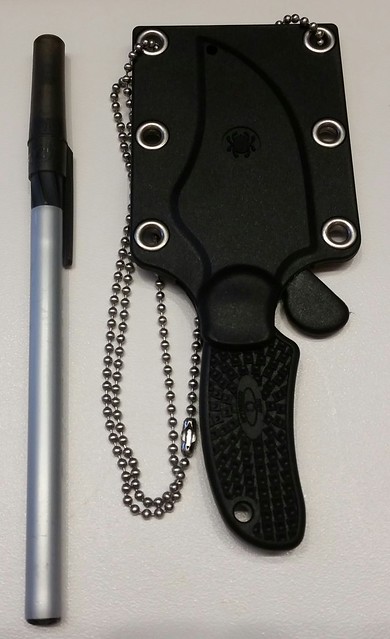

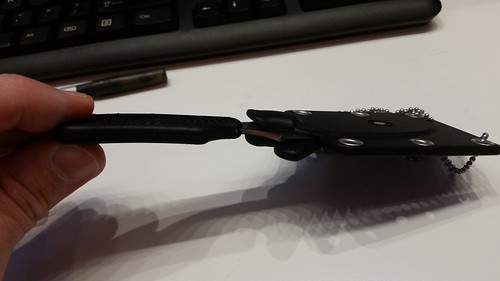
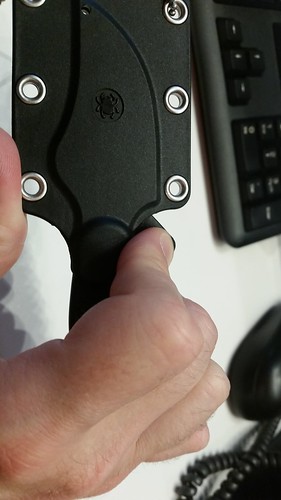
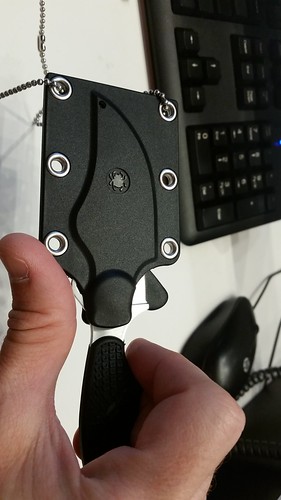
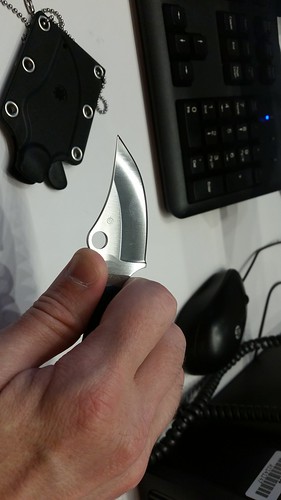
.jpg)

